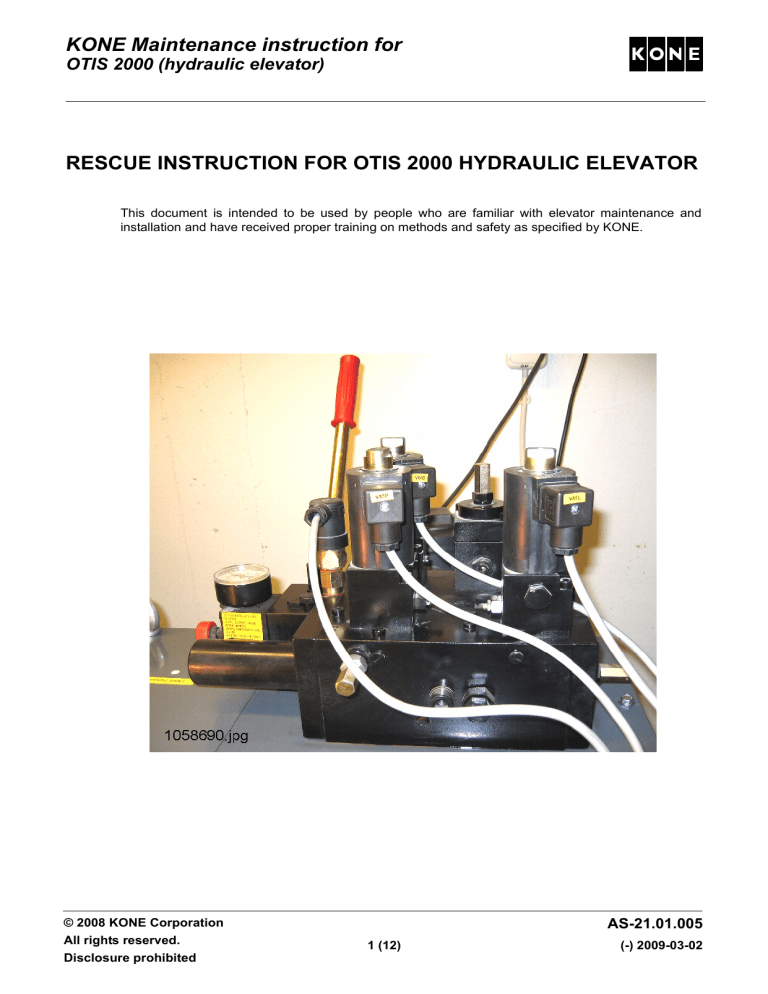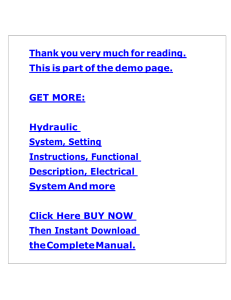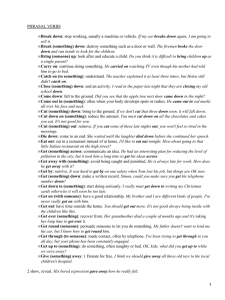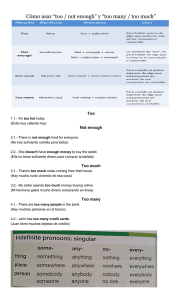
KONE Maintenance instruction for OTIS 2000 (hydraulic elevator) RESCUE INSTRUCTION FOR OTIS 2000 HYDRAULIC ELEVATOR KONE © AS-21.01.005 All (-) 2008 2009-03-02 rights Maintenance KONE reserved. Corporation instruction for This document is intended to be used by people who are familiar with elevator maintenance and installation and have received proper training on methods and safety as specified by KONE. AS-21.01.005 © 2008 KONE Corporation All rights reserved. Disclosure prohibited 1 (12) (-) 2009-03-02 KONE Maintenance instruction for OTIS 2000 (hydraulic elevator) Application Notice This document does not replace or substitute any instructions or manuals provided by the original manufacturer of the equipment. The user of this document must always ensure that all equipment specific instructions are taken into consideration when working with the elevator. AUTHORIZATION NOTICE This publication is for informational purposes only. All persons participating and using these instructions must be qualified to perform such work, are required to have received training as specified by KONE. Confidentiality Notice This confidential KONE document is provided to you only for purposes of supporting the maintenance of equipment under KONE service contract and it may not be used or its contents disclosed for any other purpose without KONE's prior written permission. Neither this document nor its contents may be copied or disclosed to third parties for any reason. KONE reserves the right to prosecute any breach of this obligation. DISCLAIMER OF WARRANTIES AND LIABILITIES KONE reserves the right at any time to alter the procedures reflected in this document. No statement contained in this document is to be construed as a warranty or condition, express or implied, as to any product, specification or procedure, its merchantability or fitness for any particular purpose or quality, or as a modification or representation of the terms of any purchase agreement. This document is intended for the internal use of KONE only. Any outside party using this document or relying on the accuracy of or disclosing any of the information contained herein assumes all risks associated therewith. KONE disclaims any liability resulting from or in connection with any outside use or disclosure of any part of the information in this document. KONE shall not be held liable for any typographical, factual, or other errors or omissions contained in this document, nor for any outside party's interpretation or use of the instructions. Trademark Notices OTIS and OTIS 2000 are registered trademarks of Otis Elevator Company. "KONE, MonoSpace, MiniSpace, EcoDisc, TranSys, Alta, KoneXion, KONE ECO3000 and all other product names are trademarks or registered trademarks of KONE Corporation in various countries." Copyright Notice Copyright ©2008 KONE Corporation All rights reserved. No part of the contents of this document may be copied, reproduced or transmitted in any form or by any means, or translated into another language or format, in whole or part, without prior written permission of KONE Corporation. AS-21.01.005 © 2008 KONE Corporation All rights reserved. Disclosure prohibited 2 (12) (-) 2009-03-02 KONE Maintenance instruction for OTIS 2000 (hydraulic elevator) CONTENTS 1 INTRODUCTION . . . . . . . . . . . . . . . . . . . . . . . . . . . . . . . . . . . . . . . . . . . . . . . . . . . . . . . . . . 4 2 SAFETY . . . . . . . . . . . . . . . . . . . . . . . . . . . . . . . . . . . . . . . . . . . . . . . . . . . . . . . . . . . . . . . . . 4 3 RESCUE EQUIPMENT . . . . . . . . . . . . . . . . . . . . . . . . . . . . . . . . . . . . . . . . . . . . . . . . . . . . . 3.1 Controller . . . . . . . . . . . . . . . . . . . . . . . . . . . . . . . . . . . . . . . . . . . . . . . . . . . . . . . . . . 3.2 Main Board LCB II . . . . . . . . . . . . . . . . . . . . . . . . . . . . . . . . . . . . . . . . . . . . . . . . . . . 3.3 Hand crank . . . . . . . . . . . . . . . . . . . . . . . . . . . . . . . . . . . . . . . . . . . . . . . . . . . . . . . . . 3.4 Emergency lowering valve . . . . . . . . . . . . . . . . . . . . . . . . . . . . . . . . . . . . . . . . . . . . . 4 RESCUE OPERATIONS . . . . . . . . . . . . . . . . . . . . . . . . . . . . . . . . . . . . . . . . . . . . . . . . . . . . 8 4.1 Selection chart . . . . . . . . . . . . . . . . . . . . . . . . . . . . . . . . . . . . . . . . . . . . . . . . . . . . . . 8 4.2 Preparations for moving the car . . . . . . . . . . . . . . . . . . . . . . . . . . . . . . . . . . . . . . . . . 9 4.3 Moving the car by using ERO . . . . . . . . . . . . . . . . . . . . . . . . . . . . . . . . . . . . . . . . . . . 9 4.4 Moving the car by using landing door jumper block and ERO . . . . . . . . . . . . . . . . . 10 4.5 Moving the car by using emergency opening valve . . . . . . . . . . . . . . . . . . . . . . . . . .11 4.6 Rescue procedures when car is in door zone . . . . . . . . . . . . . . . . . . . . . . . . . . . . . 12 5 APPROVALS AND VERSION HISTORY . . . . . . . . . . . . . . . . . . . . . . . . . . . . . . . . . . . . . . 12 AS-21.01.005 © 2008 KONE Corporation All rights reserved. Disclosure prohibited 5 5 6 7 7 3 (12) (-) 2009-03-02 KONE Maintenance instruction for OTIS 2000 (hydraulic elevator) 1 INTRODUCTION This instruction describes actions needed to rescue trapped passengers safely out of OTIS 2000 hydraulic type elevator. Rescue operations are divided into three different categories: • • • Normal rescue - allowed for trained maintenance persons of the building or professional elevator engineers. Technical rescue - allowed only for professional elevator engineers. Emergency rescue - special emergency personnel, for example firefighters. NOTE! This instruction was compiled using only few elevators. Units manufactured in different years or installed in different countries may have technical details or special features, which makes them different from the units used to create this instruction. Therefore it is not always possible to describe every procedure in detail, some elevators will need to be assessed on a case-bycase basis locally. 2 SAFETY These safety rules are mandatory for all rescue operations on an OTIS 2000 hydraulic type elevators. • • • • • • • • Only trained personnel are allowed to rescue passengers. On your way to the control panel, check where the elevator car is stopped and ensure that no one is already working there. Do not open landing doors unless it is absolutely necessary. Do not leave any open landing door unguarded. Follow the local safety regulation and KONE safety rules. No exceptions because of an unusual situation are allowed. Do not move the car, if it is in door zone. Do not move the car without supervision, if passengers can open the doors. Be careful when lowering the car with emergency valve. Always inform the passengers before using the emergency valve or moving the car with other rescue methods! AS-21.01.005 © 2008 KONE Corporation All rights reserved. Disclosure prohibited 4 (12) (-) 2009-03-02 KONE Maintenance instruction for OTIS 2000 (hydraulic elevator) 3 RESCUE EQUIPMENT The following equipment and devices are used in the rescue operations: • • • • • • • 3.1 controller user interface board (UIB) portable hand crank (optional) ERO buttons (located either in control cabinet or in hand crank) landing door jumper blocks (optional) emergency lowering valve door zone LED (located either in control cabinet or in hand crank) Controller The controller is located in the machine room. The manual operating devices of the elevator are located in controller or on a separate hand unit. Illustration 1 Fuse block 2 Main Board LCB II 3 Landing door jumper block (optional) 3 AS-21.01.005 © 2008 KONE Corporation All rights reserved. Disclosure prohibited 5 (12) (-) 2009-03-02 KONE Maintenance instruction for OTIS 2000 (hydraulic elevator) 3.2 Main Board LCB II The user interface board is located in the control cabinet. It contains devices for operating the elevator and other indicator lights. USER INTERFACE BOARD Brake current (BC) (VLC) Group (GP) Normal mode (NOR) Inspection mode (INS) Emergency stop (ES) All landing doors closed (DW) Door fully closed (DFC) AS-21.01.005 © 2008 KONE Corporation All rights reserved. Disclosure prohibited Door open limit (DOL) Door open button (DOB) Door zone LED (DZ) Motor protection (MP) 6 (12) (-) 2009-03-02 KONE Maintenance instruction for OTIS 2000 (hydraulic elevator) 3.3 Hand crank The ERO buttons and door zone LED can be located in a portable hand crank or in the control cabinet. Button / Switch. 1 Normal / ERO switch 2 UP button 3 DOWN button 4 Door zone LED (optional) 3.4 Illustration 1 2 3 4 Emergency lowering valve Button / Switch etc. Illustration 1 Emergency lowering valve 2 Hand pump 2 NOTE! GMV hydraulic valve in the picture. Also other manufacturers’ valves can be in use. 1 AS-21.01.005 © 2008 KONE Corporation All rights reserved. Disclosure prohibited 7 (12) (-) 2009-03-02 KONE Maintenance instruction for OTIS 2000 (hydraulic elevator) 4 RESCUE OPERATIONS 4.1 Selection chart 4.2 Preparations for moving the car Car is in a door zone? YES NO Main power supply is? ON OFF 4.5 Moving the car using emergency opening valve and hand pump 4.3 Moving the car using ERO Car moves? YES Car moves? YES NO NO Landing door jumper block is available? YES NO 4.4 Moving the car using ERO and landing door jumper block Car moves? YES NO Move the car to the nearest door zone. Emergency rescue is needed. Contact special personnel. 4.6 Rescue procedures when car is in door zone. AS-21.01.005 © 2008 KONE Corporation All rights reserved. Disclosure prohibited 8 (12) (-) 2009-03-02 KONE Maintenance instruction for OTIS 2000 (hydraulic elevator) 4.2 Preparations for moving the car Step 1 2 3 4 5 4.3 Action Inform the passengers that you are about to let them out and they must not try to do anything themselves. Open the control cabinet. Switch ON the shaft lights. Ensure that the car is not already in door zone. Note / Illustration Remind them to stay clear of the doors. Door zone LED does not illuminate. If the LED illuminates, finalize the rescue operation according to section 4.6 on page 12. Ensure that all doors are closed and securely locked. Moving the car by using ERO Step 1 2 3 Action Switch the Normal / ERO switch (1) to ERO position. Push the ERO UP button (2) to drive the elevator car to the nearest door zone. If the car does not move upwards, push the ERO DOWN button (3). Try to move it downwards to the nearest door zone. When the car has reached a door zone, finalize the rescue operation according to section 4.6 on page 12. Disclosure prohibited Door zone LED illuminates. AS-21.01.005 © 2008 KONE Corporation All rights reserved. Note / Illustration 9 (12) (-) 2009-03-02 KONE Maintenance instruction for OTIS 2000 (hydraulic elevator) 4.4 Moving the car by using landing door jumper block and ERO WARNING Use extreme caution when you move the car and the landing doors safety chain is temporarily bypassed. Step 1 Action Switch the Normal / ERO switch (1) to ERO position. 2 Switch the landing door jumper block to inspection position. Note / Illustration NOTE! Use a screwdriver to remove the landing door jumper block. Turn it around and place it back in the inspection position. WARNING!Before moving the car, ensure visually that all landing doors are closed. Warn passengers not to try to exit the car while you are moving it. The car moves even if doors are open. 3 Push the ERO UP button (2) to drive the car to the nearest landing door zone. If the car does not move upwards, push the ERO DOWN button (3). Try to move it downwards to the nearest door zone. NOTE! The car has reached a door zone when the door zone LED (4) illuminates. 5 Remove the landing door jumper block and put it back in the Normal position. Fasten the screw. AS-21.01.005 © 2008 KONE Corporation All rights reserved. Disclosure prohibited 10 (12) (-) 2009-03-02 KONE Maintenance instruction for OTIS 2000 (hydraulic elevator) Step 6 4.5 Action Finalize the rescue operation according to section 4.6 on page 12. Note / Illustration Moving the car by using emergency opening valve WARNING Use extreme caution when moving the car. Step 1 Action Push the emergency lowering valve button (1) to lower the car to door zone. Note / Illustration When the car is off the safety gear, try again NOTE! Instead of a button, emergency valve can be operated by a lever. 2 3 NOTE! GMV hydraulic valve in the picture. Also other manufacturers’ valves can be in use. Watch the pressure gauge: If the pressure goes to zero, the car may be stuck on safety gear. If the pressure is lost and the car has not moved down, try to lift the car up by pumping pressure up with the hand pump (2). When the car has reached a door zone, finalize the rescue operation according to section 4.6 on page 12. Disclosure prohibited 1 to lower it down by pushing the emergency lowering valve button (1). Door zone LED illuminates. AS-21.01.005 © 2008 KONE Corporation All rights reserved. 2 11 (12) (-) 2009-03-02 KONE Maintenance instruction for OTIS 2000 (hydraulic elevator) 4.6 Rescue procedures when car is in door zone Step 1 2 3 4 5 5 Action Ensure that car is in door zone (Door zone LED illuminates). Switch OFF the main switch. Lock and tag the main switch. Close the control cabinet. Lock the machine room door. Open the doors with the emergency opening key and help the passengers out. Close and lock the doors. Note / Illustration APPROVALS AND VERSION HISTORY Compiled by: Information Product Author Janne Kaskimies Checked by: 3rd Party Competence Center Director SEB Maintenance Specialist Fabien Fargnier Jukka Lindberg Approved by: SEB Maintenance Development Manager Seppo Valliovuo Translation approved by: Issue Date 2009-03-02 Description of Change First issue Disclosure prohibited Approved by Seppo Valliovuo AS-21.01.005 © 2008 KONE Corporation All rights reserved. Ref CR 12 (12) (-) 2009-03-02





